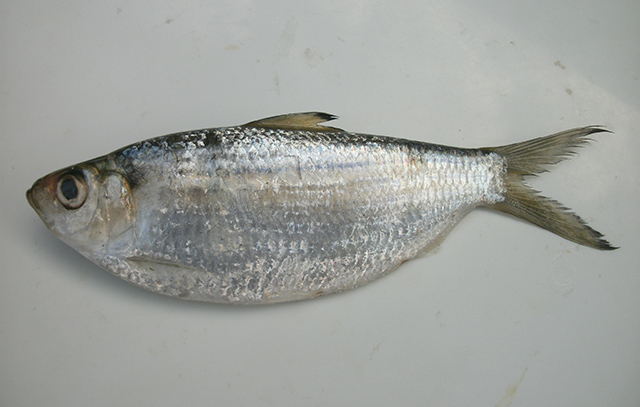| Dorosomatidae (Gizzard shads and sardinellas) |
| 20 cm SL (male/unsexed) |
|
pelagic-neritic; freshwater; brackish; marine; depth range 0 - 50 m |
| Southwest Pacific: eastern Australia (Queensland southward to New South Wales). Possibly merely an eastern subspecies, of which Herklotsichthys blackburni is the western counterpart; however, it seems equally close to Herklotsichthys Species C. Reported from lower Fly River, Papua New Guinea (Ref. 13533). |
|
Dorsal spines (total): 0-0; Dorsal soft rays (total): 16-19; Anal spines: 0-0; Anal soft rays: 17-21; Vertebrae: 41-42. Distinguished from most other Australian Herklotsichthys by lacking spots on the flank and lacking elongate wing-like scales underneath pre-dorsal scales. Most closely resembles H. blackburni but has more lower gill rakers. Separated from H. gotoi and Herklotsichthys species C by having 3 distinct dark lines upper flank. Upper caudal tip black; dorsal fin with distinct pale band. |
| Schooling species found in estuarine and coastal marine waters (Ref. 33617, 75154). Adults undergo spawning migration from coastal waters into upper reaches of estuaries during summer and autumn (Ref. 33617). |
|
Least Concern (LC); Date assessed: 02 March 2017 Ref. (130435)
|
| harmless |
Source and more info: www.fishbase.org. For personal, classroom, and other internal use only. Not for publication.
